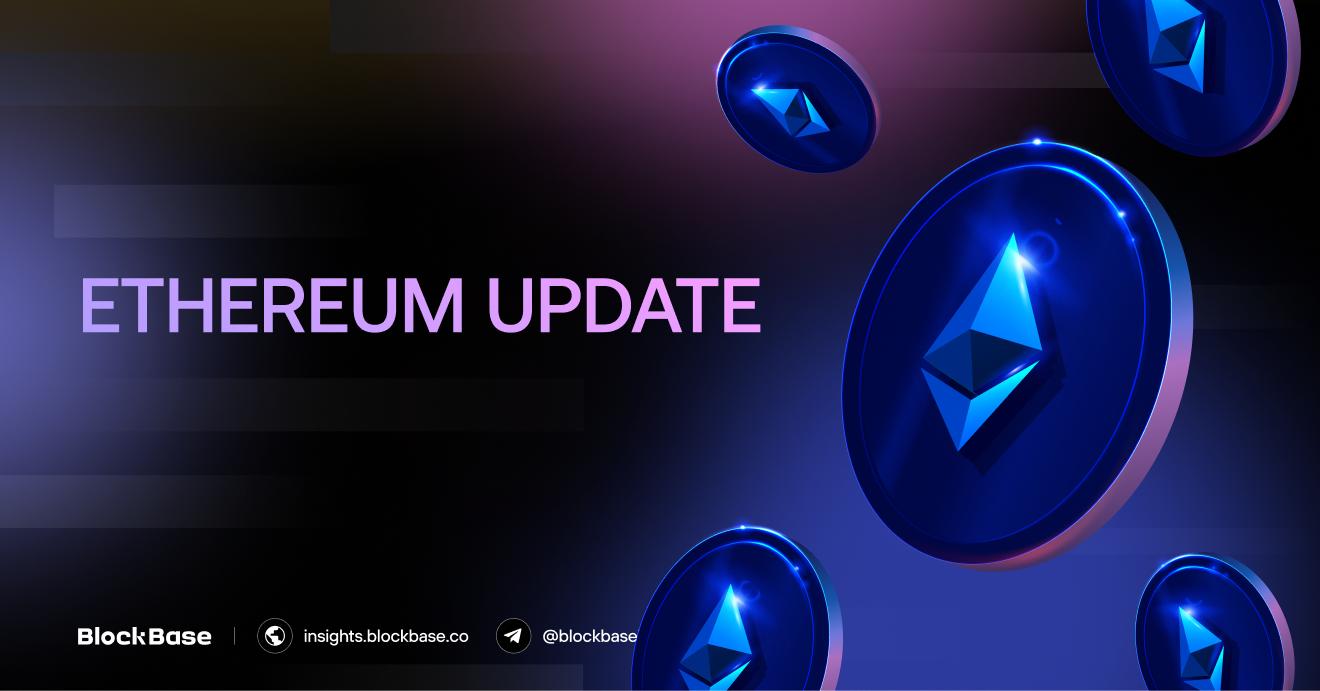Ethereum has solidified its position as a leading blockchain platform with a remarkable November performance and a transformative roadmap for its future. Driven by a 47% rally in ETH prices, advancements in Blobspace, and the introduction of Justin Drake’s ambitious Beam Chain proposal, Ethereum is showcasing its adaptability in a competitive blockchain environment. This article explores Ethereum’s recent milestones, the growing significance of Blobspace, and the potential long-term impact of the Beam Chain vision.
1. Ethereum’s Market Performance
Ethereum demonstrated a 47% rally in November, surpassing Bitcoin’s 39% gain and reinforcing investor confidence in its ecosystem. The performance is attributed to increasing on-chain activity, a bullish outlook on ETH ETFs, and advances in Ethereum’s scalability infrastructure, particularly Blobspace.
Blobspace emerged as a standout contributor, with fees reaching a record $2.7M in November, highlighting its rising adoption by L2 rollups. Momentum has accelerated in December, with month-to-date Blobspace revenue up 73% compared to November, indicating sustained demand.
Blobspace fees have burned 916 ETH in the last 30 days, accounting for 42% of all blob fees burned since the Merge. This reinforces Blobspace’s role in Ethereum’s deflationary model, adding long-term value to the ETH ecosystem.

2. Blobspace: A Rising Star in Ethereum’s Ecosystem
Ethereum’s Blobspace, introduced through EIP-4844, is rapidly becoming a pivotal component of the blockchain’s scaling ecosystem. Designed as a dedicated data availability layer, Blobspace allows L2 rollups to post transaction proofs efficiently and cost-effectively. With December 2024 witnessing record Blobspace revenue of $4.7M, its growth trajectory reflects increasing demand, but it also highlights the complex dynamics of balancing scalability, cost, and Ethereum’s economic model.
Blobspace operates on a demand-driven pricing model, similar to Ethereum’s blockspace. If utilization exceeds the target threshold, costs increase exponentially by 12.5% per block. This mechanism prevents Blobspace congestion while aligning fees with usage demand.

To counter rising costs and maximize Blobspace utility, L2s have implemented advanced efficiency measures:
- Full Utilization of Blobs: L2s now fill each blob to capacity before posting it to Ethereum, reducing the total number of blobs required.
- Advanced Compression Techniques
- Arbitrum: Achieved a 5% reduction in data posting size.
- Base: Reduced posted data by 37%.
- Optimism: Implemented techniques cutting data by an impressive 67%.
- Starknet: Recently announced compression methods capable of reducing data size by 5x.
- Transition to zk-Rollups: zk-rollups, unlike optimistic rollups, post significantly less data to Ethereum by leveraging zero-knowledge proofs. This evolution could further reduce Blobspace dependency for L2s while enhancing transaction throughput.
3. The Beam Chain Roadmap: Ethereum’s Vision for the Future
Ethereum researcher Justin Drake introduced the Beam Chain proposal at Devcon Bangkok, a bold redesign of Ethereum’s consensus layer to address inefficiencies, enhance performance, and incorporate cutting-edge cryptographic advancements. Beam Chain seeks to replace the current Beacon Chain, which has underpinned Ethereum’s POS consensus since its launch in 2020 and integration with the mainnet during the Merge in 2022. Leveraging advancements like SNARKs and zk-VMs, the proposal focuses on three key improvements.
- First, it aims to decentralize block production by restructuring builder and relay levels, improving censorship resistance, and introducing faster slot times with four-second blocks and faster finality. This would maintain accessibility for validators, including home stakers.
- Second, it proposes lowering the staking threshold from 32 ETH to just 1 ETH, making Ethereum staking more accessible and inclusive.
- Finally, the plan incorporates SNARK-based, post-quantum cryptography with hash-based signatures to ensure Ethereum’s security against future quantum computing threats. A key feature of the proposal is its modular, off-chain SNARK implementation, enabling validators to choose zkVM architectures without risking ecosystem lock-in or compatibility issues.

With a timeline spanning research in 2025, production in 2026, and testing through 2028, Beam Chain reflects Ethereum’s deliberate approach to transformative updates. While proponents emphasize the need for caution, critics like Martin Koeppelmann and Eric Wall argue for faster implementation to maintain competitiveness in the rapidly evolving blockchain space.
4. Conclusion
Ethereum’s recent market performance, driven by Blobspace growth and the ambitious Beam Chain proposal, highlights its resilience and adaptability in a highly competitive blockchain environment. The Beam Chain is a bold initiative to modernize Ethereum’s consensus layer, emphasizing decentralization, security, and scalability. However, its lengthy timeline reflects the challenges of upgrading a decentralized ecosystem and raises concerns about Ethereum’s ability to maintain its competitive edge. Balancing careful execution with the need for agility will be crucial.
Looking forward, Blobspace’s rapid growth serves as a significant catalyst for Ethereum’s bullish narrative, further strengthened by the anticipated demand surge from ETH ETFs.
The information provided in this article is for reference only and should not be taken as investment advice. All investment decisions should be based on thorough research and personal evaluation.





